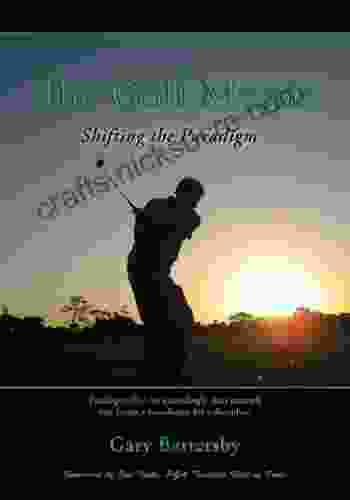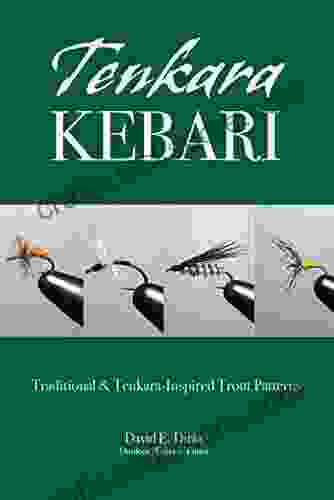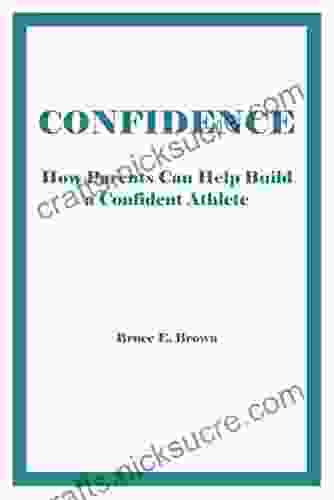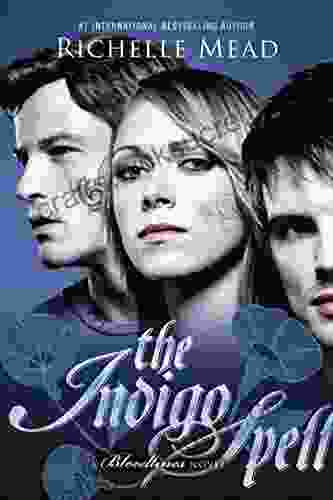Tenkara Kebari: Traditional Kebari Inspired Trout Patterns

The world of fly fishing is a vast and diverse one, with countless techniques and gear to choose from. Tenkara, a traditional Japanese method of fly fishing, stands out for its simplicity and effectiveness. At the heart of Tenkara is the kebari, a type of fly that is expertly crafted to imitate natural insects and entice trout. In this comprehensive article, we will delve into the captivating world of Tenkara kebari, exploring their history, construction, and various patterns inspired by the beauty and abundance of nature.
The Origins of Tenkara Kebari
The origins of Tenkara kebari can be traced back to as early as the 18th century. It is widely believed that Japanese anglers, observing the feeding habits of trout in mountain streams, sought to replicate the local aquatic insects that formed their primary diet. These early kebari were meticulously tied with natural materials, such as feathers, fur, and bamboo, to mimic the appearance and movement of insects like caddisflies, mayflies, and stoneflies.
4.6 out of 5
| Language | : | English |
| File size | : | 20754 KB |
| Text-to-Speech | : | Enabled |
| Screen Reader | : | Supported |
| Enhanced typesetting | : | Enabled |
| Word Wise | : | Enabled |
| Print length | : | 112 pages |
| Lending | : | Enabled |
The Craftsmanship of Tenkara Kebari
Creating a Tenkara kebari is a true art form that requires patience, precision, and a deep understanding of trout behavior. Traditional kebari are typically tied on small, barbless hooks, with each component carefully selected to enhance its imitative qualities. The hook shank is dressed with a variety of materials, including thread, wire, feathers, and fur, to create a lifelike representation of an insect. Tenkara kebari are often minimalistic in design, with an emphasis on functionality and subtle movement over elaborate ornamentation.
Types of Tenkara Kebari
The world of Tenkara kebari is immensely diverse, with countless patterns inspired by the insects that inhabit various ecosystems around the world. These patterns can be broadly categorized into two main types: dry flies and wet flies.
Dry Flies
Designed to float on the water's surface, dry flies imitate insects that rest or emerge from the water. Some popular dry fly patterns for Tenkara include:
- Sakasa Kebari: A versatile dry fly that represents a variety of insects, featuring a peacock herl body and extended hackle.
- Elk Hair Caddis: A classic dry fly that imitates caddisflies, with a wing made from elk hair and a body of thread or dubbing.
- Adams: A general-purpose dry fly that is effective in most situations, with a dubbed body and parachute-style hackle.
Wet Flies
Wet flies are designed to sink beneath the water's surface and imitate insects that live or feed there. Some popular wet fly patterns for Tenkara include:
- Yuzu Kebari: A classic wet fly that resembles a caddisfly or mayfly larva, with a shaggy body and wire hackle.
- Pheasant Tail Nymph: A realistic nymph pattern that imitates a variety of aquatic insects, with a dubbed pheasant tail and rib.
- Zug Bug: A weighted wet fly that is effective in deep or fast-flowing water, with a bead head and fluffy body made from marabou or chenille.
Choosing the Right Tenkara Kebari
Selecting the appropriate Tenkara kebari for a given situation is crucial to achieving success. Factors to consider when choosing a kebari include:
- Water conditions: Dry flies are suitable for calm, still waters, while wet flies are more effective in deeper or faster-flowing water.
- Insect activity: Observing the insects that are hatching or emerging on the water can provide valuable clues as to which kebari pattern to use.
- Trout behavior: Trout may be feeding aggressively on or below the surface, which can influence the choice of dry or wet fly.
The world of Tenkara kebari is a treasure trove of tradition, craftsmanship, and effectiveness. These meticulously tied flies, inspired by the natural world, have proven their worth in countless trout streams around the globe. By understanding the history, construction, and various patterns of Tenkara kebari, anglers can elevate their Tenkara fishing experience, connect with the natural world, and enjoy the beauty and tranquility of this ancient art.
4.6 out of 5
| Language | : | English |
| File size | : | 20754 KB |
| Text-to-Speech | : | Enabled |
| Screen Reader | : | Supported |
| Enhanced typesetting | : | Enabled |
| Word Wise | : | Enabled |
| Print length | : | 112 pages |
| Lending | : | Enabled |
Do you want to contribute by writing guest posts on this blog?
Please contact us and send us a resume of previous articles that you have written.
 Fiction
Fiction Non Fiction
Non Fiction Romance
Romance Mystery
Mystery Thriller
Thriller SciFi
SciFi Fantasy
Fantasy Horror
Horror Biography
Biography Selfhelp
Selfhelp Business
Business History
History Classics
Classics Poetry
Poetry Childrens
Childrens Young Adult
Young Adult Educational
Educational Cooking
Cooking Travel
Travel Lifestyle
Lifestyle Spirituality
Spirituality Health
Health Fitness
Fitness Technology
Technology Science
Science Arts
Arts Crafts
Crafts DIY
DIY Gardening
Gardening Petcare
Petcare Colin Hunter
Colin Hunter Adam Lazarus
Adam Lazarus Anthony Wilkenson
Anthony Wilkenson Natasha Preston
Natasha Preston Adam Chandler
Adam Chandler Carl Vernon
Carl Vernon Aaron Reed
Aaron Reed David Rensin
David Rensin P S Page
P S Page Sissy Goff
Sissy Goff Amber Fox
Amber Fox Ben Cohen
Ben Cohen Craig Timberg
Craig Timberg Susan Walton
Susan Walton Gloria Atanmo
Gloria Atanmo Tamora Pierce
Tamora Pierce Ned Johnson
Ned Johnson Hillary Allen
Hillary Allen Vivian Gussin Paley
Vivian Gussin Paley Abby Hafer
Abby Hafer Claire Santry
Claire Santry Adam Kimelman
Adam Kimelman Michael Gruenbaum
Michael Gruenbaum John D Gordon
John D Gordon Roman Dial
Roman Dial Aliza Green
Aliza Green Matt Warshaw
Matt Warshaw Meg Keys
Meg Keys Jack Cavanaugh
Jack Cavanaugh Helen C Rountree
Helen C Rountree Stephanie Zeiss
Stephanie Zeiss Robert Allans
Robert Allans Aaron Blight
Aaron Blight Gladys Chepkirui Ngetich
Gladys Chepkirui Ngetich Irene Lewis Mccormick
Irene Lewis Mccormick Stephen Abbott
Stephen Abbott Rory Miller
Rory Miller Abhishek V R
Abhishek V R Miriam Forman Brunell
Miriam Forman Brunell David Lipsky
David Lipsky Gerry Donohue
Gerry Donohue Brad Brewer
Brad Brewer Jack Moore
Jack Moore Genius Reads
Genius Reads Andy Couturier
Andy Couturier Tim Jarvis
Tim Jarvis Adam Lashinsky
Adam Lashinsky Joy Neighbors
Joy Neighbors J Robert King
J Robert King David Simon
David Simon Robert Reid
Robert Reid Sam J Miller
Sam J Miller Michelle Hodkin
Michelle Hodkin Vince Kotchian
Vince Kotchian Michael Johnson
Michael Johnson Barry Dainton
Barry Dainton Aaron Lee Johnson
Aaron Lee Johnson Ed Engle
Ed Engle Sean Lewis
Sean Lewis Lin Wellford
Lin Wellford Kit Bauman
Kit Bauman Aaron Graves
Aaron Graves Sarah Moore
Sarah Moore Aaron Reed Msn Crna
Aaron Reed Msn Crna Adam J Cox
Adam J Cox Thubten Yeshe
Thubten Yeshe Tim Larkin
Tim Larkin Glen Finland
Glen Finland Stephen Brennan
Stephen Brennan Rosie Pope
Rosie Pope Richelle Mead
Richelle Mead O Thomas Gift
O Thomas Gift Lisa M Schab
Lisa M Schab Kel Carpenter
Kel Carpenter Charlie Barker
Charlie Barker Rex Ogle
Rex Ogle Corinne Andrews
Corinne Andrews Adam Enaz
Adam Enaz Winston Chang
Winston Chang Lisa M Given
Lisa M Given Charles L Byrne
Charles L Byrne Sheldon Axler
Sheldon Axler Christian Beamish
Christian Beamish Tom Rosenbauer
Tom Rosenbauer Bill Mckibben
Bill Mckibben Abigail Hair
Abigail Hair Barbara A Lewis
Barbara A Lewis John Kean
John Kean Blake D Bauer
Blake D Bauer Kevin A Morrison
Kevin A Morrison Agustin Fuentes
Agustin Fuentes Jasna Tuta
Jasna Tuta Tom Mccarthy
Tom Mccarthy Christophe Jaffrelot
Christophe Jaffrelot Marvin Valerie Georgia
Marvin Valerie Georgia E P Marcellin
E P Marcellin John Taylor
John Taylor Dan Werb
Dan Werb Dick Edie
Dick Edie Xiuhtezcatl Martinez
Xiuhtezcatl Martinez Lucio Russo
Lucio Russo Maureen Duffin Ward
Maureen Duffin Ward Cosmas Inyang
Cosmas Inyang Norton Juster
Norton Juster Matt Owens
Matt Owens Elisabetta Viggiani
Elisabetta Viggiani Adam Koch
Adam Koch Pamela Druckerman
Pamela Druckerman William Hamilton Gibson
William Hamilton Gibson Mary Wong
Mary Wong David G Brown
David G Brown Barbara Decker
Barbara Decker Kate Rope
Kate Rope Taylan Hoca
Taylan Hoca Sean Mcmanus
Sean Mcmanus Stuart Firestein
Stuart Firestein Chiara Giuliani
Chiara Giuliani Jim Willis
Jim Willis Todd Graves
Todd Graves Arthur Atchabahian
Arthur Atchabahian Sorin Dumitrascu
Sorin Dumitrascu T L Lowery
T L Lowery Kaylynn Flanders
Kaylynn Flanders Abdul Foster
Abdul Foster Adam Frank
Adam Frank Aaron Mccargo
Aaron Mccargo Daniel Carter Beard
Daniel Carter Beard Lenyfer Garrido
Lenyfer Garrido Farah Shabazz Ii
Farah Shabazz Ii Lisa Latimer
Lisa Latimer Charles Fernyhough
Charles Fernyhough Gayle Forman
Gayle Forman Monica Sorrenson
Monica Sorrenson Rachel Caine
Rachel Caine Bobby Reyes
Bobby Reyes Al Yellon
Al Yellon Abigail Alling
Abigail Alling Kemi Iwalesin
Kemi Iwalesin Charles H Kraft
Charles H Kraft Marc Dando
Marc Dando Scott Meyers
Scott Meyers Erika Fatland
Erika Fatland Chris Worfolk
Chris Worfolk Adam J Rosh
Adam J Rosh Tom Migdalski
Tom Migdalski R L Stine
R L Stine Jeremy Roenick
Jeremy Roenick George J Hademenos
George J Hademenos Steve Griffith
Steve Griffith Jessie Hartland
Jessie Hartland Timothy Phelps
Timothy Phelps Michael Baigent
Michael Baigent Phil Gaimon
Phil Gaimon Jennifer Shannon
Jennifer Shannon Abinash Das
Abinash Das Rolf Mowatt Larssen
Rolf Mowatt Larssen Scott Parsons
Scott Parsons Beth Newell
Beth Newell Maya Lang
Maya Lang Rick Sekuloski
Rick Sekuloski Jason Korol
Jason Korol Gail Buckland
Gail Buckland Baba Ifa Karade
Baba Ifa Karade Lindsey Ellison
Lindsey Ellison Randall Hyde
Randall Hyde Claire Ahn
Claire Ahn Barry Robinson
Barry Robinson Scott Shaw
Scott Shaw Mikki Daughtry
Mikki Daughtry Axie Oh
Axie Oh M J Parisian
M J Parisian Louise Thaden
Louise Thaden Fred Fields
Fred Fields Sherri Granato
Sherri Granato Clara Shaper
Clara Shaper Heather Lynn
Heather Lynn Marie Cirano
Marie Cirano Vivienne Sanders
Vivienne Sanders Abigail Hing Wen
Abigail Hing Wen Tali Edut
Tali Edut Ron Hotchkiss
Ron Hotchkiss Moon Ho Jung
Moon Ho Jung Rose Ann Hudson
Rose Ann Hudson Adam Freeman
Adam Freeman Sarah Maslin Nir
Sarah Maslin Nir Brian Hoggard
Brian Hoggard Bill Loguidice
Bill Loguidice Justin Driver
Justin Driver Jacob Neumann
Jacob Neumann Laura Ray
Laura Ray Richard Sattora
Richard Sattora Andrew Skurka
Andrew Skurka Erik Scott De Bie
Erik Scott De Bie Casey Robson
Casey Robson Hans C Ohanian
Hans C Ohanian Carolyn Jessop
Carolyn Jessop Horace Kephart
Horace Kephart Adam Benshea
Adam Benshea Abby Haight
Abby Haight Michael Egan
Michael Egan Phong Thong Dang
Phong Thong Dang Gisle Solhaug
Gisle Solhaug Ian Davis
Ian Davis Michael N Mitchell
Michael N Mitchell Chella Quint
Chella Quint John Caig
John Caig T L Christianson
T L Christianson Ken Springer
Ken Springer Cornel West
Cornel West Ann Frederick
Ann Frederick Aaron Hahn
Aaron Hahn James Surowiecki
James Surowiecki Achusim Michael
Achusim Michael Seth Kugel
Seth Kugel Alicia C Simpson
Alicia C Simpson Stephen Gray
Stephen Gray Goodman Publishing
Goodman Publishing Miranda Kenneally
Miranda Kenneally Domenica Marchetti
Domenica Marchetti Lynn E Ponton
Lynn E Ponton Charles C Patrick
Charles C Patrick Ryan Smithson
Ryan Smithson Laura Peyton Roberts
Laura Peyton Roberts David Warriner
David Warriner Judi Kesselman Turkel
Judi Kesselman Turkel Betsy Miller
Betsy Miller Sophie Mccartney
Sophie Mccartney Alifya And Umesh Mohite
Alifya And Umesh Mohite Christopher Black
Christopher Black Abbas Kazerooni
Abbas Kazerooni Sheri Van Dijk
Sheri Van Dijk Achille Rubini
Achille Rubini Iain Highfield
Iain Highfield Lois G Schwoerer
Lois G Schwoerer Amelia Whitmore
Amelia Whitmore Caroline Kaufman
Caroline Kaufman Pearson Education
Pearson Education Randi Hutter Epstein
Randi Hutter Epstein Israel Finkelstein
Israel Finkelstein Abu Mussab Wajdi Akkari
Abu Mussab Wajdi Akkari Ian Mcleod
Ian Mcleod Nancy Mohrbacher
Nancy Mohrbacher Paula Deen
Paula Deen Lynn Alley
Lynn Alley Robert Fritz
Robert Fritz Peter Harrison
Peter Harrison Jessica Hepburn
Jessica Hepburn Laurence Steinberg
Laurence Steinberg Laura Sebastian
Laura Sebastian Megan Lane
Megan Lane Tomos Forrest
Tomos Forrest James Heberd
James Heberd Adam Braus
Adam Braus Thomas Wilson
Thomas Wilson Gil Capps
Gil Capps Lavinia Collins
Lavinia Collins Eugene H Merrill
Eugene H Merrill Emily Suzanne Clark
Emily Suzanne Clark Cassandra Eason
Cassandra Eason Deborah Beck Busis
Deborah Beck Busis Dr Robert Pasahow
Dr Robert Pasahow Paul Mclerran
Paul Mclerran Brian L Gorman
Brian L Gorman Martha Gellhorn
Martha Gellhorn Christopher Monahan
Christopher Monahan Stacy Eaton
Stacy Eaton Chashiree M
Chashiree M Paul Schneider
Paul Schneider Brandon Neice
Brandon Neice Teresa Finney
Teresa Finney Carmen Moreno
Carmen Moreno Phil Boyle
Phil Boyle Shannon Hale
Shannon Hale Joe Simpson
Joe Simpson Marlene Wagman Geller
Marlene Wagman Geller Winifred Conkling
Winifred Conkling Amber Domoradzki
Amber Domoradzki Arthur Turrell
Arthur Turrell Al Barkow
Al Barkow Darrin Bergman
Darrin Bergman Kirk Bailey
Kirk Bailey Ann Mariah Cook
Ann Mariah Cook Garo Yepremian
Garo Yepremian Stephanie Puglisi
Stephanie Puglisi Ilsa J Bick
Ilsa J Bick Jennifer Ackerman
Jennifer Ackerman An American Citizen
An American Citizen Annie Nicholas
Annie Nicholas Jennifer Finney Boylan
Jennifer Finney Boylan Dan Morris
Dan Morris Melodie M Davis
Melodie M Davis Christopher Knight
Christopher Knight Brigitte Jordan
Brigitte Jordan Kathy Koch Phd
Kathy Koch Phd Aaron James
Aaron James Abraham Silberschatz
Abraham Silberschatz Adam Boduch
Adam Boduch Tom Jackson
Tom Jackson Kim Gosselin
Kim Gosselin Jennifer L Hunt
Jennifer L Hunt Steve Roper
Steve Roper Katrina Kahler
Katrina Kahler Gary Sakuma
Gary Sakuma Edward J Larson
Edward J Larson Irakli Makharadze
Irakli Makharadze Stephen A Mitchell
Stephen A Mitchell Ralph Villiger
Ralph Villiger Eduardo Duran
Eduardo Duran Ronald Kaine
Ronald Kaine Papus
Papus Stefan Ball
Stefan Ball Brian Greene
Brian Greene Susan Zeppieri
Susan Zeppieri Abbi Glines
Abbi Glines Rob Gray
Rob Gray Laura Gao
Laura Gao Pat Chargot
Pat Chargot Richard Langer
Richard Langer Chuck Callaway
Chuck Callaway Allan Sand
Allan Sand Peter Sagal
Peter Sagal Lisa Pineda
Lisa Pineda Adam Becker
Adam Becker Al Desetta
Al Desetta Bruce Van Brunt
Bruce Van Brunt Barbara Natterson Horowitz
Barbara Natterson Horowitz Lillian Cumic
Lillian Cumic Garrett Mcnamara
Garrett Mcnamara Ron Jones
Ron Jones Paul Chiasson
Paul Chiasson Jeremy Shinewald
Jeremy Shinewald Christopher S Stewart
Christopher S Stewart Michelle Obama
Michelle Obama Abigail Owen
Abigail Owen Elena Aguilar
Elena Aguilar Aaron Mahnke
Aaron Mahnke Abby Sunderland
Abby Sunderland Virginia Smith Harvey
Virginia Smith Harvey Adam H Balen
Adam H Balen Eze Ugbor
Eze Ugbor Dmv Test Bank
Dmv Test Bank Larry Carpenter
Larry Carpenter Aaron Oster
Aaron Oster Lisa Robertson
Lisa Robertson Tony Soper
Tony Soper Jay Ruud
Jay Ruud Zoe Hamlet Silva
Zoe Hamlet Silva Abdelkader Nouiri
Abdelkader Nouiri Asato Asato
Asato Asato Conrad Bauer
Conrad Bauer Laurie Chaikind Mcnulty Lcsw C
Laurie Chaikind Mcnulty Lcsw C Douglas W Hubbard
Douglas W Hubbard Andrew Campanella
Andrew Campanella Peter David
Peter David Harley Rustad
Harley Rustad Gerald A Voorhees
Gerald A Voorhees David Winner
David Winner Barbara Fox
Barbara Fox Helen Scales
Helen Scales Abigail Marshall
Abigail Marshall Louise Pickford
Louise Pickford Jay Dawes
Jay Dawes Renda Dionne Madrigal
Renda Dionne Madrigal Kristin Berry
Kristin Berry Abigail Melton
Abigail Melton Debbie Ford
Debbie Ford Sharon Boyd
Sharon Boyd Fumio Sasaki
Fumio Sasaki Michael Crawley
Michael Crawley Alvin Alexander
Alvin Alexander Charles Thomas Jr
Charles Thomas Jr Linda Sarris
Linda Sarris Aiden Thomas
Aiden Thomas John Hancock
John Hancock Uri Bram
Uri Bram Drew Harris
Drew Harris Adam Galinsky
Adam Galinsky Steve Mcmenamin
Steve Mcmenamin Wayne Westcott
Wayne Westcott G Bailey
G Bailey Shari Eskenas
Shari Eskenas Walter Browder
Walter Browder Abigail Pogrebin
Abigail Pogrebin Zoyla Arana
Zoyla Arana Vikas Kakwani
Vikas Kakwani Dawson Church
Dawson Church Abbey Curran
Abbey Curran Aaron J Perry
Aaron J Perry Collins Kids
Collins Kids Emily K Neuburger
Emily K Neuburger Suzanne Corkin
Suzanne Corkin Catherine Ryan Hyde
Catherine Ryan Hyde Daphne Poltz
Daphne Poltz Lee Sandlin
Lee Sandlin Jane Gross
Jane Gross Scott Butler
Scott Butler Jimmy Houston
Jimmy Houston Nick Holt
Nick Holt Tomi Adeyemi
Tomi Adeyemi Devika Primic
Devika Primic Emma Crewe
Emma Crewe Sasha Abramsky
Sasha Abramsky Terry Palechuk
Terry Palechuk David Feddes
David Feddes Abridged Ed Edition Kindle Edition
Abridged Ed Edition Kindle Edition Jeremy Paxman
Jeremy Paxman Jenny Han
Jenny Han Lucy Letcher
Lucy Letcher Linford Stutzman
Linford Stutzman Mark Strom
Mark Strom Katie Lear
Katie Lear Man Kam Lo
Man Kam Lo Stephen R Lawhead
Stephen R Lawhead Kenn Kaufman
Kenn Kaufman Steve Rosenberg
Steve Rosenberg Abigail Tucker
Abigail Tucker Bathroom Readers Institute
Bathroom Readers Institute Alicia Silverstone
Alicia Silverstone Alan Robertson
Alan Robertson Abby Mcallister
Abby Mcallister Andy Dumas
Andy Dumas Christopher Pike
Christopher Pike Sarah K L Wilson
Sarah K L Wilson Amby Burfoot
Amby Burfoot Sheila Lamb
Sheila Lamb Benjamin Roberts
Benjamin Roberts Jennifer Greene
Jennifer Greene Andrea M Nelson Royes
Andrea M Nelson Royes Sam Jarman
Sam Jarman Curt Lader
Curt Lader Debbie Elicksen
Debbie Elicksen Lisa Heffernan
Lisa Heffernan Jeremy Miles
Jeremy Miles Achim K Krull
Achim K Krull Maxine Levaren
Maxine Levaren Rachael Ray
Rachael Ray Ariana Eagleton
Ariana Eagleton Richard Martin
Richard Martin Al Baird
Al Baird Carl Jones
Carl Jones Mark Januszewski
Mark Januszewski Liza Angela
Liza Angela Leigh Bardugo
Leigh Bardugo Ken Retallic
Ken Retallic Sally Clarkson
Sally Clarkson Chris Jericho
Chris Jericho Ada Calhoun
Ada Calhoun Adam D Scott
Adam D Scott Scott Carney
Scott Carney Deborah Madison
Deborah Madison Lynn Rush
Lynn Rush Shuai Huang
Shuai Huang Gregor Clark
Gregor Clark Jim Morekis
Jim Morekis Neil Oliver
Neil Oliver William Deresiewicz
William Deresiewicz Chaz Scoggins
Chaz Scoggins Felice Fox
Felice Fox Christina Hoff Sommers
Christina Hoff Sommers Sarah Luddington
Sarah Luddington Dan Shideler
Dan Shideler Programming Languages Academy
Programming Languages Academy Mary Roach
Mary Roach Achref Hassini
Achref Hassini Richard Lighthouse
Richard Lighthouse Rania Abouzeid
Rania Abouzeid Gavin D J Harper
Gavin D J Harper Jon Butterworth
Jon Butterworth Og Mandino
Og Mandino Michel Roy
Michel Roy Randy Walker
Randy Walker Emily J Taylor
Emily J Taylor Martha C Nussbaum
Martha C Nussbaum Michael L Bloomquist
Michael L Bloomquist Steven Alan Childress
Steven Alan Childress Alexander Nehamas
Alexander Nehamas George John Romanes
George John Romanes Jeff Bauman
Jeff Bauman Carley Roney
Carley Roney Reinette Biggs
Reinette Biggs Kayla Cottingham
Kayla Cottingham
Light bulbAdvertise smarter! Our strategic ad space ensures maximum exposure. Reserve your spot today!

 Mario SimmonsGet Your Captain License: The Ultimate Guide to Obtaining Your Commercial...
Mario SimmonsGet Your Captain License: The Ultimate Guide to Obtaining Your Commercial... Stanley BellFollow ·3.6k
Stanley BellFollow ·3.6k Bobby HowardFollow ·17.2k
Bobby HowardFollow ·17.2k Corbin PowellFollow ·8.6k
Corbin PowellFollow ·8.6k Beau CarterFollow ·15k
Beau CarterFollow ·15k Mikhail BulgakovFollow ·12.3k
Mikhail BulgakovFollow ·12.3k Kazuo IshiguroFollow ·12.1k
Kazuo IshiguroFollow ·12.1k Dean CoxFollow ·10.6k
Dean CoxFollow ·10.6k Leo TolstoyFollow ·7.2k
Leo TolstoyFollow ·7.2k

 Doug Price
Doug PriceTracing the Evolution of Modern Psychoanalytic Thought:...
Psychoanalysis, once considered a radical...

 Devin Ross
Devin RossThe Digital Role Playing Game Approaches To Digital Game...
These are just a few of the many...

 F. Scott Fitzgerald
F. Scott FitzgeraldHistory from Things: Essays on Material Culture
History from Things:...

 Percy Bysshe Shelley
Percy Bysshe ShelleyThe Priest Lake Girl and the Cabin of Love: A True Story...
The Murder On...

 Isaiah Powell
Isaiah PowellThe Golf Mystic: Dick Edie's Unconventional Approach to...
In the annals of golf history, the name Dick...
4.6 out of 5
| Language | : | English |
| File size | : | 20754 KB |
| Text-to-Speech | : | Enabled |
| Screen Reader | : | Supported |
| Enhanced typesetting | : | Enabled |
| Word Wise | : | Enabled |
| Print length | : | 112 pages |
| Lending | : | Enabled |












